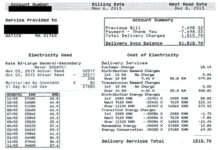Whether planning a complete bathroom renovation or simply updating your space, there are plenty of ways to save water and reduce water consumption.
From low-flow toilets and showerheads to drought-tolerant plants, there are many easy and effective ways to make your bathroom more sustainable. Here are a few of our favorite water-saving hacks for your next bathroom remodel!
When you’re planning a bathroom, or remodel, consider ways to save water.
Planning a bathroom remodel is an exciting opportunity to make the room your own while ensuring it’s practical and efficient. One way to keep your project efficient is by looking into ways to conserve water in your bathroom.
Some great options include swapping out inefficient shower heads for low-flow devices like aerators, installing a dual-flush or other high-efficiency toilet, and looking into motion sensor sinks or faucets that shut off automatically when not in use.
You might be surprised at how much you can save in terms of cost and water usage. Not only will you have a beautiful new bathroom, but you’ll also have peace of mind knowing it’s helping the environment.
One way to do this is by installing low-flow toilets and showerheads.
Low-flow toilets and showerheads have become a popular way to make households more eco-friendly. Not only do they save water, but they often cost less to install than older models. Low-flow toilets use 1.6 gallons of water per flush, compared to 3.5 gallons for older toilets.
And low-flow showerheads use 2.5 gallons of water per minute instead of 7. Low-flow fixtures are often very easy to find, and you can even select from various styles to fit your decor preferences – making it easy to seamlessly integrate them into your home without compromising on design aesthetics.
Best of all, you can usually enjoy significant savings on water bills when you switch over to low-flow fixtures in your bathroom and kitchen.
You can also save water by using drought-resistant plants in your landscaping.
Landscaping for water-wise yards is an eco-friendly choice that can also help you save money on your water bill! Drought-resistant plants require less watering than most conventional plants and often require additional watering only during extreme heat.
With the variety of drought-tolerant plants available today, you can easily create a beautiful and serene outdoor space without wasting precious water resources. Take advantage of your local garden center’s recommendations and make sure your landscape plan includes drought-resistant grasses, shrubs, ground-like covers, and trees to create a stunning outdoor area with minimal effort.
Another way to reduce water consumption is to collect rainwater in barrels for use in your garden.
Rain barrels are a great way to help conserve water and reduce water bills. Rainfall from storms and other natural occurrences is gathered in the barrels and can be used for gardening or other needs.
This also helps reduce your contributions to runoff pollution. The collected rainwater will not flow over driveways or roads, where it can absorb pollutants such as motor oil, gasoline, and fertilizers.
Allowing rain to enter a barrel also benefits plants in drought-prone areas by providing them with additional moisture during dry spells. Collecting rainwater in barrels is an easy and economical solution for increasing the efficiency of your water usage habits that may positively affect the environment and your wallet.
These are just a few ways to save water during a bathroom remodel!
One of the first things to consider when remodeling a bathroom is how best to conserve water. Installing low-flow toilets and shower heads, investing in tankless water heaters, and utilizing eco-friendly fixtures can all help reduce water consumption without sacrificing comfort.
You may also consider replacing older toilets or sinks with newer models with built-in water-conserving technology, such as dual-flush toilets or hands-free faucets. For added savings, install an aerator on your sink faucet, which will help cut down on water flow while also reducing water pressure; these things greatly improve the overall efficiency of your faucet.
Ultimately, by making these small changes during your bathroom remodel, you can greatly impact the amount of water used – a win for both your wallet and the environment!
Why is it important to conserve water?
Conserving water in the house is crucial for numerous reasons. First and foremost, conserving water helps ensure that an adequate supply of clean, safe drinking water will be available.
Reducing your household’s daily water consumption can also have a positive environmental impact, reducing the energy used to treat and transport water.
Additionally, conserving water can save you money on your monthly utility bills by reducing the water you use without sacrificing quality or comfort. Finally, conserving water at home allows us to do our part in helping foster a more sustainable future.
Teaching children to conserve water
Teaching children to conserve water in the house is an important life lesson. Introducing kids to water-saving habits such as turning off the faucet when brushing teeth and taking shorter showers can help make a difference for our planet.
Additionally, identifying ways to maximize efficiency around the home can be fun for kids – such as collecting rainwater for watering plants or finding creative containers to collect running tap water while warming up in the shower.
Using tools such as “water footprint calculators” or turning off leaks in sinks and toilets are also great activities that make conserving water more fun and demonstrate how it can save money on utility bills. Finally, having honest conversations with children about why conserving water is essential can instill a sense of responsibility and help foster a more sustainable future.
Professional home renovators
A bathroom remodels a great opportunity to become more conscious of your water consumption by exploring options that help reduce water use. Low-flow toilets and showerheads are easy to install and can make all the difference in conserving this precious resource.
You can also incorporate drought-resistant plants while landscaping or collect rainwater in barrels for your garden. Remember, every drop counts! Doing something as simple as swapping out old fixtures and equipment for new, eco-friendly ones can have lasting benefits for you and the environment.


























